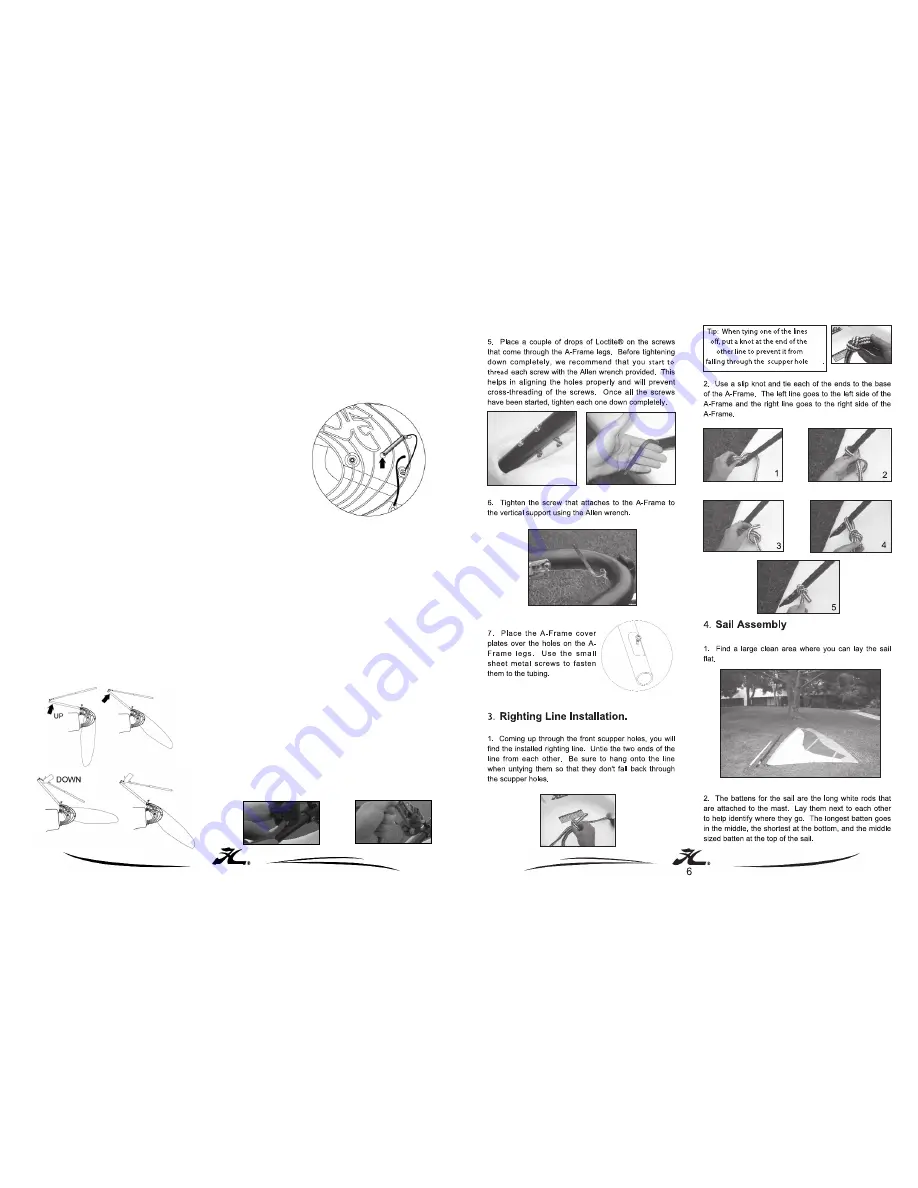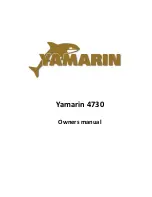
Sailing Basics
BALANCING THE BOAT
When sailing, sit on the upwind side of the boat (wind on
your back) just in front of the tiller, facing the sail. As
the boat begins to heel over with wind in the sails,
balance your weight further outboard. Tuck one of your
feet under the hiking straps to help your balance. Use
your hand that is forward to hold and control the
mainsheet. Your aft hand is used to steer the rudder.
STEERING
Steer the boat by pushing the tiller away from you to
turn towards the wind. Pull the tiller toward you to turn
away from the wind. It is important to keep the tiller
movements to a minimum to prevent over-steering.
This will help keep the boat moving in a straight line as
you pay attention to other watercraft and sail
adjustments.
RUDDER OPERATION
The Hobie Bravo is now equipped with the new EZ Lock
Rudder System. The rudder housing is made out of
engineering-grade reinforced nylon making it virtually
maintenance free and will never rust or corrode.
This new design has a simplified and more intuitive
function: to raise the rudder, lift the tiller; to lower the
rudder, lower the tiller. The rudder automatically locks
into either position and is held by spring loaded detents.
The rudder will kick up if beached or if hit by some
obstruction.
17
RUDDER UP-KEEP AND PRECAUTIONS
1. When in use, make sure that the rudder is locked in
the “down” position. You will know if it isn’t down if the
steering feels heavy.
2. If used in saltwater, it is always a good idea to rinse
the rudder assembly with fresh water.
3. If the boat is stored outdoors for extended periods of
time without being used, remove the rudder assembly
and store it indoors.
4. Avoid storing the rudder assembly in extremely hot
conditions, as in an enclosed vehicle exposed to direct
sunlight.
RUDDER LOCKING PIN
Attached to the side of each rudder is a locking pin.
This pin is designed to keep your rudder in the “up”
position during transportation. Bumpy launch ramps or
steep angled beaches could cause the rudders to drop
down, causing the blade to dig into the ground. To
install the pin, put the rudder in the “up” position and
simply remove the
pin that is snapped
to the casting and
insert it through
the hole in the side
of the rudder.
When you want to
put the rudder
back down,
remove the pin
and snap it back
into the side of the
casting.
ABOUT YOUR MAINSHEET BLOCK
The mainsheet block provided with your Hobie Bravo
allows you to cleat the mainsheet for more comfortable
cruising. To cleat off the line, simply pull the mainsheet
into the spring-loaded cleat.
To uncleat the line, a flick of the wrist with the line in
hand can usually pop it out of the cleat.






























